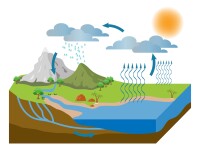Search
There are 48 results.
Category
Tag
Tag
All (48)
Active Learning (2)
Activities (1)
Assessments (1)
Asynchrony (1)
Canvas (2)
Content Creation (17)
Copyright (2)
Course Maintenance (4)
Course Materials (9)
Course Preparation (3)
Faculty Presence (1)
Faculty Support (1)
Game-Based Learning (2)
Gamification (1)
Generative AI (2)
Images (4)
Inclusion (2)
Infographics (2)
Multimodality (1)
Page Design (1)
PowerPoint (2)
Presentations (1)
Representation (2)
Revising (2)
Rubrics (1)
Screen Readers (1)
Social Media (1)
Synchrony (1)
Universal Design for Learning (UDL) (2)
Video (13)
Visual Accessibility (2)
Visual Design (2)
Implementing Social Media
Many students use social media platforms in their daily lives, and “emerging evidence indicates that students express positive attitudes toward using social media for learning in general” (Baisley-Nodine et al., 2018). However, there are many concerns connected with using social media in an educational setting. These include issues related to a lack of familiarity with the platform, the potential for distraction, and privacy concerns. Therefore, it is important to carefully plan the use of social media in a course to address any potential issues or concerns.
Self-Recording Best Practices
While traditional lectures are delivered in front of a classroom and allow you to read students’ engagement and adjust in real time to both content and pacing, online lectures do not afford the same flexibility. Therefore, it is important to carefully plan your videos in accordance with best practices in online learning. There are many video types and formats to choose from (see the Envision piece Matching Video Production Style to Learning Goals). One decision you'll need to make is whether you want to appear on camera. This guide covers best practices for videos that will include your webcam footage.
Infographic Considerations
An infographic is a visual that combines text, graphics, diagrams, and graphs to present information. When used effectively, infographics can be a powerful tool to guide students through the learning process. As described by Krauss (2012), “Infographics ask for an active response from the viewer, raising the questions, ‘What am I seeing?’ and ‘What does it mean?’” (p. 10). Infographics also present information in an organized way, which can improve students’ critical thinking, analysis, and synthesis skills (Yildirim, 2016).
Branching Scenario Best Practices Guide
Designed to simulate real-world experiences, branching scenarios are powerful tools for increasing student engagement. Like a choose-your-own-adventure book, a branching scenario invites users to explore a virtual world, using knowledge and skills from their coursework and information shared within the scenario to make decisions. The decisions they make lead them down different pathways (some of which may include embedded documents and videos) toward different endings. Depending on the complexity of the branching scenarios and the choices students make, they can experience a variety of different possible outcomes within a single scenario.
Audio-Only Content to Support Learning
In comparison to instructional videos, the role of audio-only instructional content in online learning has received scant attention. When audio-only content is discussed, the research often centers on the use of audio feedback or student-created podcasts, rather than instructor-created instructional audio. Additionally, few studies have compared learning outcomes from recorded video lectures versus from audio alone, except within the context of specific disciplines, such as second language acquisition (Berner & Adams, 2004).
Hyperlink Dos and Don'ts
When designing a course, you want to ensure that all students can access the websites and documents that you link to. Accessible hyperlinks are particularly important for students with screen readers, which read the links out loud. This piece contains best practices for writing and formatting accessible hyperlinks so that all learners can access the content that you have curated for your course.
Administrator Needs: Standardizing Elements of a Digital Learning Program
As an administrator or department chair, you are in a unique position to shape an online program and establish programmatic requirements or recommendations. This is because you have been tasked with taking a broader view of the program, focusing not only on individual course development (as a faculty member might) but also on how an array of courses must be cohesively united to achieve certain goals, values, and accreditation standards. To that end, this piece focuses on why consistency across a program is integral to program quality and student success, and therefore why it falls within your purview to consider standardizing certain elements, requirements, and design choices across all courses in a program.










